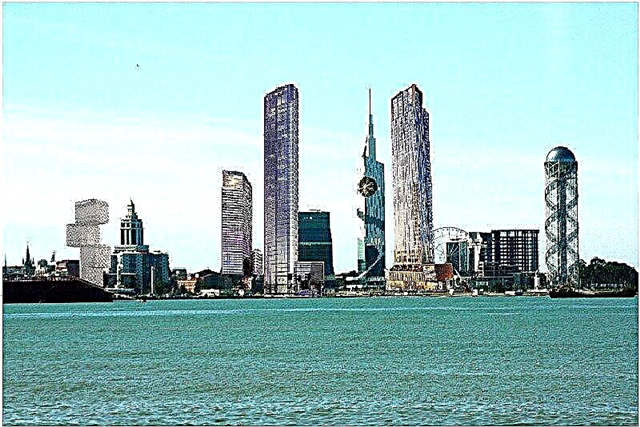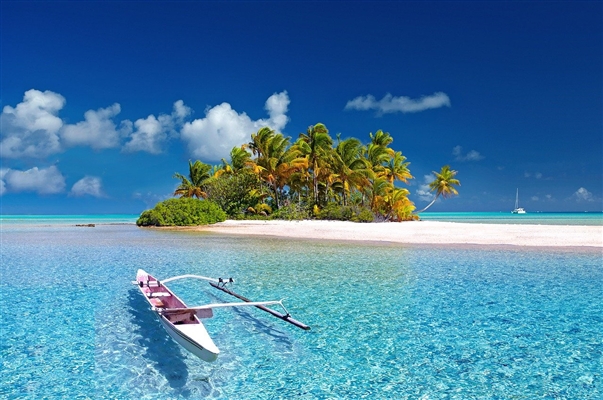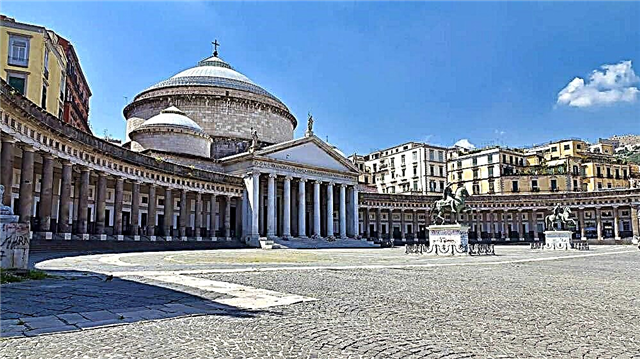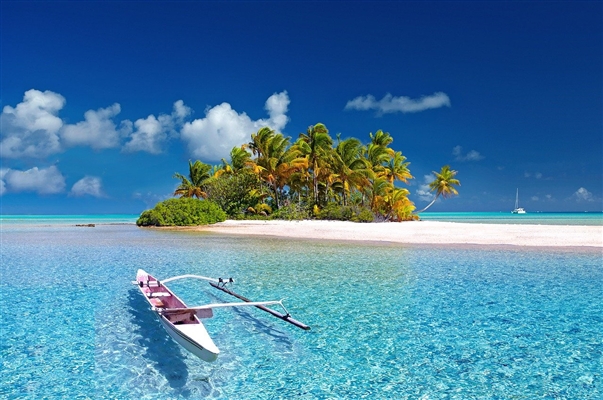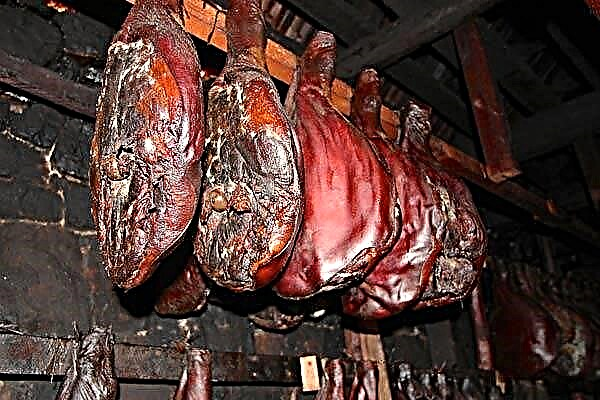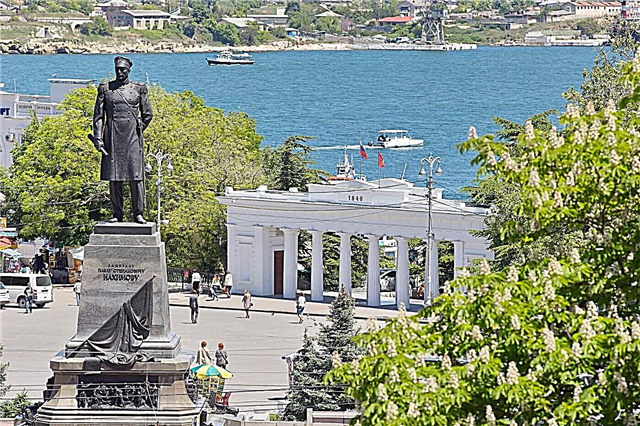A hero city with many monuments related to its military history in the open air. It is better to start exploring Sevastopol from the embankment and the Grafskaya pier. From here you can see the famous Monument to the Scuttled Ships, depicted on the coat of arms of the city. The tourist route should include a visit to the Malakhov Kurgan, a diorama and a memorial complex dedicated to the storming of Sapun Mountain.
Historical and natural sights of the city are no less interesting. The reserve "Chersonesos Tauric" will acquaint the guests of the city with the history of Sevastopol in medieval and ancient times. A unique monument of religion and history is the Inkerman cave monastery. You can start acquaintance with the nature of the region with a visit to Cape Fiolent, the beauty of the landscapes of which was appreciated by Russian artists. Diana's grotto and Jasper beach are also located here.
The most interesting and beautiful places
List, photos with names and descriptions of the best sights of Sevastopol. He will help you plan routes to explore all the top places of the city in 2-3 days.
Sevastopol Bay
The largest and most picturesque bay of Sevastopol. It juts out into the Crimean peninsula for 7.5 km, its width is 1 km. This location is extremely convenient for placing a seaport in it; the Black Sea Fleet is also based here. All year round, you can go on a boat trip along the bay - from the Grafskaya pier to the city of Inkerman. You can get from one side of the bay to the other by water - boats and a ferry run.

Museum-reserve "Chersonesos Tauric"
Ancient Greek city, founded in 422-421 BC. The museum, founded on the site of its archaeological site, is protected by UNESCO. Museum staff are conducting research work in the open air. Visitors can walk along the streets of the ancient settlement. The museum includes the ruins of buildings - towers, an amphitheater, temples, thermal baths, as well as the remains of the fortresses of Kalamita and Cembalo, the Italian courtyard.

Primorsky Boulevard
A popular vacation spot where the city's attractions and memorable places are concentrated. The boulevard was founded at the end of the 19th century as a cultural center with walking areas and a theater. It offers a beautiful view of the Black Sea and the Monument to the Scuttled Ships. Mass events are often held - the celebration of Victory Day, the annual Fyodor Ushakov's ball. There are many cafes and restaurants, there is a gallery of street artists.
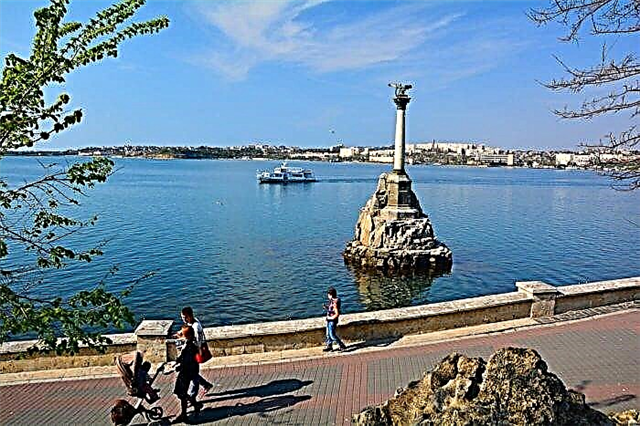
Memorial complex "Malakhov Kurgan"
Located at the highest point of the city, 97 meters above sea level. The territory of the memorial park complex offers an excellent view of the Yuzhnaya Bay and the city itself. Significant monuments keep the memory of the heroism and heroism of the soldiers who heroically defended the city during the Crimean and Great Patriotic Wars. The 19th century fortification tower stands out, in which there is a museum with military exhibits.

Nakhimov Square
The main square of the city, included in the architectural monument of the City Ring in the historical center of the city. On the picturesque territory, city holidays are held - City Day, Victory Day, Day of the Russian Navy. In the center of the square there is a 12-meter-high monument to the admiral and naval commander Nakhimov. Opposite it there is a memorial in memory of the defense of the city in 1941-1942 and the Eternal Flame. The Grafskaya pier adorns the square.

Count's pier
Built in 1783. The pier is decorated with an elegant grand gate, which is an architectural monument. A wide staircase leads from the gate to the water, on the sides of which there are sculptures of lions made of marble, the work of the Italian master Pellichio. The pier is made of Inkerman stone, which has been widely used in construction since ancient times. In honor of the memorable events, several memorial plaques have been installed at the pier.

Monument to the Scuttled Ships
The symbol of Sevastopol, reproduced on the emblem of the city. The monument was created in memory of the sunken ships that blocked the way to the bay for enemy ships. It is located in the water 20 meters from the city's main promenade. The height of the monument is 16 meters. An obelisk with a sculpture of an eagle is installed on the base of stone blocks. Its wingspan is over 2 meters. The bas-relief of the pedestal depicts the scene of the sinking of ships.

Balaklava Bay
Formed by a tectonic fault in a rocky area 20 km from Sevastopol. On Mount Krepostnaya at the entrance to the bay, there are the ruins of the Chembalo fortress. The picturesque bay is appreciated by lovers of yachting - it is closed from strong winds and waves, there are few large ships in it. Previously, there was a submarine base and secret facilities of the Black Sea Fleet. You can see the Balaklava Museum - walk through the tunnels of the Submarine Museum.

Nazukin embankment
The main embankment of Balaklava was founded in the 1880-1890s. It offers a beautiful view of the Cembalo fortress and Mount Kastron. There are many entertainment places on the embankment - cafes, restaurants, a city beach, a yacht club, a diving center, souvenir shops. There are private skiffs and yachts and passenger boats at the berths. You can go on a boat trip along the Balaklava Bay, to the Fiolent and Aya capes, to the Diana's grotto.

Fountain "Order of Victory"
The alley of fountains is located in Victory Park. The large-scale water structure with a diameter of 50 meters has an unusual appearance. The jets of water from the fountains and marble figures around represent the Order of Victory, which is very clearly visible from the air. In the dark, the fountain is illuminated by illumination from 400 lamps. The opening of the fountain in 2019 is timed to celebrate the 75th anniversary of the liberation of Sevastopol from enemy invaders.

Inkerman Vintage Wine Factory
The winery has been operating since 1963. The total area of the entire territory of the plant is 7 hectares, the area of wine cellars is 55,000 m². The plant's products regularly receive awards at international competitions. You can taste exquisite wines, learn about the stages of its production on excursions organized at the factory. Guests are taken to the cellars, told about the characteristics and features of the types of wines.

Genoese fortress Chembalo
Its construction began in the XIV century. It consisted of two parts - the city of St. Nicholas and the city of St. George. The fortress was badly damaged during repeated hostilities on the territory of Balaklava, only majestic ruins remained from it. The remains of the medieval structure are popular with tourists. A staircase leads to one of the well-preserved towers of Barnabo Grillo from the Nazukin embankment.
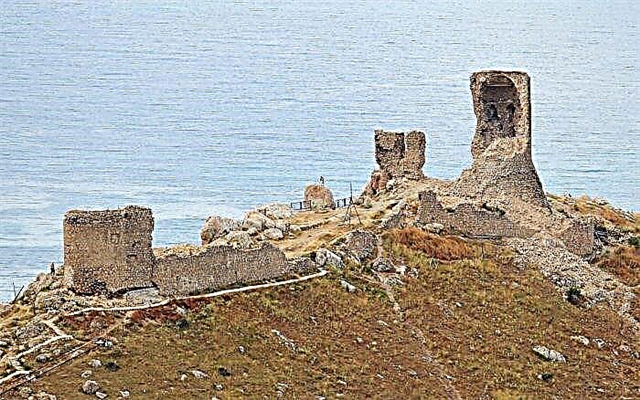
Great Sevastopol trail
Tourist route with a total length of 250 km. Consists of several sections with a length of 10 to 20 km. Passes through picturesque places - mountains, hills, the Black Sea coast. The easiest part of the route is between the Gorny Klyuch and Lyubimovka tract, passing through the ancient Chersonesos and the oldest oak in the Crimea. In other areas, you can see cave monasteries, a waterfall, "Taurus boxes", caves, the "Barrel of Death" fort.

Barrel of death
Part of the southern fort between Sevastopol and Balaklava. The construction of the fort began in the 19th century, using ditches cut into the rock, connected by concrete adits. The metal structure with cut loopholes was popularly called the Barrel of Death due to the widespread belief that the Germans threw captured soldiers from it. Tourists visit this place to pay their debt to the memory of the lost defenders of the city.

Military-historical museum complexes
The main memorial complexes associated with the military history of the city. On their territory there are memorial museums and monuments.
Memorial complex "Sapun-Gora"
Located 12 km from the city.This is an 8 km long spur of the Crimean Mountains, which three times became the epicenter of hostilities and fierce battles. Now a memorial complex has been founded here - memorial plaques and obelisks have been installed, a diorama museum has been erected depicting the assault on the mountain, the Eternal Flame is burning. The mines left over from the Great Patriotic War are still found among the trees in the park.

Memorial complex "35th coastal battery"
Powerful defensive artillery structure. The historical and memorial complex in the Cossack Bay on its territory is considered one of the most visited places by tourists, dedicated to the heroic defense of Sevastopol in 1941-1942. Its area is 80,000 m², the area of underground structures is 5,000 m². The complex includes casemates, the Necropolis of the Fallen, a chapel, a monument to the personnel and the Pantheon of Memory.

Museum complex "Mikhailovskaya Battery"
A protective structure on the shore of the Sevastopol Bay, within the walls of which the museum is located. Its expositions are devoted to military topics - the defense of the city, fortifications, the Russian fleet. There are exhibits from the times of the Crimean, Civil, First and Second World Wars - documents, weapons, ammunition. Within the walls of the halls there are installations showing the real situation of the wartime of the 19th century.

Museum complex "Konstantinovskaya battery"
The battery was built in 1840. A long defensive structure in the northern part of the Sevastopol Bay is shaped like a horseshoe. In the courtyard of the complex near the common grave, a monument and a memorial plate are erected. Museum exhibitions are located in the former premises of the casemates. Soldiers' household items, weapons, helmets and uniforms are on display. Wartime interiors have been restored - soldiers 'bunks, officers' offices.

Balaklava underground museum complex
Located on the territory of a former underground plant built in Mount Tavros, 17 km from Sevastopol. The excursion route is 900 meters long and involves inspection of previously classified objects - the nuclear arsenal, the shipping channel, premises for the repair of submarines. In the documents, the plant was listed as Object 825GTS. The submarines were in the depths of the rocks 126 meters from the surface.

Boulevards and parks of Sevastopol
Beautiful gardens and parks with alleys where you can walk, sit on a bench and breathe in the fresh air.
Victory Park
A large park in the Gagarinsky district not far from the embankment. It has green alleys, a beach area, amusement zones and sports grounds. In memory of the fallen soldiers, a high 30-meter obelisk was erected, crowned with a sculpture of St. George the Victorious. Several fountains have been built. In addition to the main large fountain in the form of the Order of Victory, there are several smaller fountains symbolizing the hero cities.

Historic boulevard
The green area of the boulevard covers an area of 28 hectares - this is one of the favorite places for walking among the townspeople. It is located on a hill in the center of the city. A memorial complex was founded on the boulevard, which includes 13 monuments in honor of the heroes of the war. At the entrance to the boulevard there is a monument to Fyodor Ushakov, in the center of the boulevard there is a monument to the military engineer Totleben surrounded by soldiers. The height of the monument is 13 meters, it was installed in 1906.

Sailor Boulevard
It is located in the historical center near Nakhimov Square. Founded in the 1830s. Repeatedly suffered from destruction during the wars, but rebuilt. At the entrance to the boulevard from the side of Nakhimov Avenue, there are curbstones with marble sculptures of lions. On the boulevard itself there are monuments to the brig Mercury and Kazarsky, as well as a monument in honor of the 100th anniversary of the invention of radio by Popov, a sculpture of a Boy with a boat.

Anna Akhmatova Park
A small square next to Streletskaya Bay. It overlooks the coastline, and walking in the green area of the park can be combined with relaxing at the water's edge. A cascading staircase leads to the beach area. A good panoramic view of the Black Sea opens from here. On the territory of the park there are cafes, children's play areas, sports grounds. The park is decorated with several snow-white rotunda structures in antique style.

Park of Living History "Fedyukhiny Vysota"
A park with an area of 129 hectares is located in Balaklava, 20 km from Sevastopol. Its museum buildings are dedicated to the ancient and medieval history of Crimea. Buildings and costumes repeat in detail all the elements of a bygone era. A copy of a Roman fort of the 1st-3rd centuries BC was built by hand from stone, the estate of Loko Chimbali was erected, where guests are introduced to folk crafts. Gladiator shows are held - this spectacle invariably attracts many spectators.

The best museums of Sevastopol
The most interesting museums in the city, which are definitely worth a visit.
Military History Museum of the Black Sea Fleet
One of the most popular tourist destinations in the entire western Crimea. The museum building was erected at the end of the 19th century in a classical style, reminiscent of ancient buildings. For 150 years, the museum funds have collected about 30,000 exhibits dedicated to the Black Sea fleet. Among the most valuable exhibits are models of sailing ships, brigs and battleships, Osman Pasha's saber, personal belongings of Kornilov and Nakhimov, photographs and documents of the war years.

Sevastopol Marine Aquarium Museum
Created in 1897. It is inhabited by the inhabitants of different continents - the Red Sea, African lakes, the Amazon. The aquariums are located in five rooms equipped with modern equipment. The inhabitants of the aquariums are tropical sharks, spectacled caiman, electric eel, jellyfish, starfish, piranhas, and turtles. The artificial scenery reproduces the coral reef landscape. There are reptile terrariums.

Museum-panorama "Defense of Sevastopol"
Dedicated to the first defense of Sevastopol during the Crimean War. The panorama is based on the image of the battle on the Malakhov Kurgan in 1855. The work on the canvas took the artist Franz Roubaud 3 years. The museum opened in 1905. In 1942, the 2/3 panorama canvas was destroyed during the bombardment of the museum building and its further transportation in flooded holds. The panorama was restored in 1954.

Diorama "Assault on Sapun Mountain on May 7, 1944"
Located on the top floor of the military field museum on the ridge of Sapun Mountain. A picturesque monument to the feat of Soviet soldiers was opened in 1959. The canvas depicting the climax of the battle is 25.5 meters long and 5.5 meters high. The characters in the foreground of the picture have real prototypes. Worked on the creation of the diorama, the studio team. Grekov, it is based on the work of Peter Maltsev. In 2004, the diorama was voiced.

Sevastopol Art Museum
Opened in 1927 on the basis of nationalized private collections. It is located in a luxurious 19th century mansion. The most valuable are works of Russian pre-revolutionary art - Shishkin, Klodt, Aivazovsky, Repin, Kuindzhi, Levitan. There are about 250 paintings by representatives of Western European painting, including works by Flemish and Dutch masters of the 17th century.

Museum "Underground Sevastopol"
The expositions of the museum are located in the bunker of the bomb shelter, hidden in the bowels of the hill in the center of the city. A 60-meter tunnel and airtight sluice doors lead into it. The bunker dungeons are a small city that can shelter up to 2,000 people in the event of an atomic war. The exhibitions tell about the history of dealing with emergencies, the creation of the Ministry of Emergency Situations, and neutralized hazardous facilities.

Architectural landmarks of Sevastopol
The most notable monuments of architecture and urban planning, beautiful buildings and historical structures.
Palace of childhood and youth
The snow-white majestic building looks like a real palace. Built in 1914 and located on Nakhimov Avenue. The building in the shape of the letter "P" is made in the styles of Art Nouveau and Neoclassicism.The main entrance is decorated with antique-style columns that support a triangular roof. Initially, the building housed the famous health resort named after. Sechenov, where they used progressive methods of treatment.

Tower of Winds
An architectural monument in the style of classicism built in 1849. Intended for ventilation of the premises of the Maritime Library, which burned down in 1855. Outwardly, it resembles a copy of a marble tower in Athens, built in the 1st century BC. On each side of the Tower of the Winds there are mythological figures that personified different directions of the winds. During the first outbreak of Sevastopol, the tower served as an observation post.
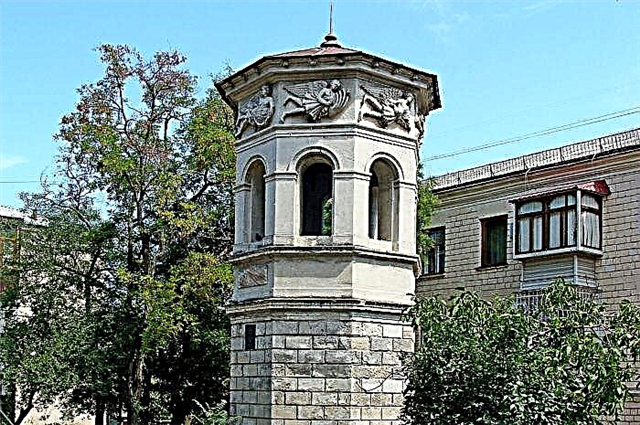
Baydar Gate
The architectural monument is located on the pass of the same name between the Chhu-Bair and Chelebi mountains. Built in honor of the completion of the construction of a direct road from Yalta to Sevastopol. The symbolic gate is made of limestone blocks, the portico is decorated with a beautiful cornice and semi-columns. In the upper part of the high gates there are observation platforms, from which Foros and the picturesque landscapes of the Baydar Valley are perfectly visible.

Chorgunsky bridge-aqueduct
It is located between the villages of Khmelnitskoye and Chernorechye, 20 km from Sevastopol. It was built as a drainage system for filling the Korabelnaya Bay with fresh water. The entire hydrotechnical complex was 18 km long, but most of it was destroyed during the Crimean War. The aqueduct bridge was built in the classical antique style with three semicircular arches designed by Upton. It is 12 meters long and 4.5 meters high.

Sevastopol Kenassa
An architectural monument, which is a religious building of a small ethnic group of Karaites. Its construction was carried out from 1896 to 1908. The building is located near the Tavricheskaya Stairs. The facade of the building, previously richly decorated with decorative elements, is now austere and laconic. After the revolution, the religious building was used as a secular club for Karaites and Tatars, and later as a pioneer and sports club.

Chersonesos lighthouse
The operating lighthouse with a height of 36 meters is located on the Cape Chersonesos. The reinforced concrete building, built in 1816, is faced with a beautiful white Inkerman stone. The beacon's light can be seen from a distance of 16 miles, and the radio beacon is capable of transmitting a signal over a range of 150 miles. It is one of the most powerful navigational facilities in Europe. During the Great Patriotic War, the lighthouse was destroyed and restored in the 1950s.

The best theaters of Sevastopol
The main drama theaters of the city are named after the Soviet revolutionary and statesman Lunacharsky and the war journalist, playwright Lavrenyov.
Russian Drama Theater named after A. V. Lunacharsky
The theater has been located in a luxurious and majestic building on Nakhimov Avenue since 1967. It was built specifically for the drama theater, which has had a creative success since its inception. The theater's repertoire includes more than 50 performances, most of which are based on classical works. The theater tours a lot in the cities of Russia and the CIS, and also takes part in international festivals.

Theater of the Black Sea Fleet named after B. A. Lavrenyov
Founded in 1932 by order of the statesman Klim Voroshilov. The theater showed itself during the Great Patriotic War, when it staged patriotic performances and performed not on the usual stage, but on the front lines, decks of ships, hospitals. The theater continued this tradition by performing in 1999 for the military in Chechnya and Dagestan, as well as playing about 20 performances for military units during the "Crimean Spring".

Churches and temples of Sevastopol
The main places of worship in the city, famous cathedrals and temples.
Vladimir Cathedral in Chersonesos
The cathedral was founded in 1891. It is believed that it was erected on the very spot where Prince Vladimir converted to Christianity in 987. The cathedral is located on the territory of the Tauric Chersonesos reserve. This is one of the largest temples on the Crimean peninsula, its height is 26 meters. The author of the project of the cathedral is the architect David Grimm. He gave the multi-level building the original features of the neo-Byzantine style.

Vladimirsky (Admiralty) Cathedral
The cathedral in the Russian-Byzantine style is located on the Central City Hill, as if it rises above the city. The church is traditionally the burial place for officers and admirals of the Russian navy. The temple was built from 1854 to 1888. Even during construction, admirals Nakhimov, Kornilov, Istomin were buried in the crypt at the cathedral. In the lower part of the church, the burials have a common gravestone with a black marble cross.

Temple-pyramid of St. Nicholas
Orthodox church-monument, located at the Bratsk cemetery. There are more than 500 individual and mass graves in the cemetery, in which hundreds of soldiers, officers, generals who died in the Crimean War are buried. The pyramid temple was built at the end of the 19th century in memory of the defenders of Sevastopol. The unique shape makes the temple one of the main symbols of the city's architecture. The temple is crowned with a cross weighing 24 tons.

Cathedral of the Intercession
Built in 1905 in the city center. It has a rich history - the cathedral housed the tomb of Lieutenant Schmidt and the sailors of the cruiser Ochakov, its walls were occupied by an infectious diseases hospital, an archive, a bomb shelter, and a sports school. The restored temple, 37 meters high, looks light and weightless. It is richly decorated with intricate kokoshniks, arched windows, luxurious stucco molding, mosaic icons on the facade.

Peter and Paul Cathedral
More reminiscent of a Greek antique temple than an Orthodox church. Moreover, it is built according to the traditions of Russian classicism. It is surrounded by 44 stucco limestone columns, and the facades are completed with triangular pediments. At the main entrance there are mosaics depicting Saints Paul and Peter. The cathedral is located on the Central Hill of the city from the side of the South Bay. Construction ended in 1844.

Monasteries of Sevastopol
The city has interesting ancient monasteries to visit.
Inkerman cave monastery
A functioning monastery, which is considered one of the oldest in Crimea. Some historians consider the 8th century to be the date of its foundation. It is located near Sevastopol on the Monastic Rocks by the Chernaya River. Five of the six temples of the monastery are located in rocky caves near the spring, the water of which is considered holy. The ruins of the Kalamita fortress have been preserved on the territory of the monastery. The monastery guides conduct excursions around the monastery.

St. George Monastery
Located in Balaklava near Cape Fiolent. It is believed to have been founded by Taurian Greek seafarers in 891 in gratitude for the miraculous salvation during a storm. The oldest preserved buildings of the monastery are the cave church of the Nativity of Christ, the refectory, the chapel at the grave of Metropolitan Chrysanthus. The monastery was visited by Bunin, Aivazovsky, Chekhov, Pushkin, Griboyedov, emperors of the Russian Empire.
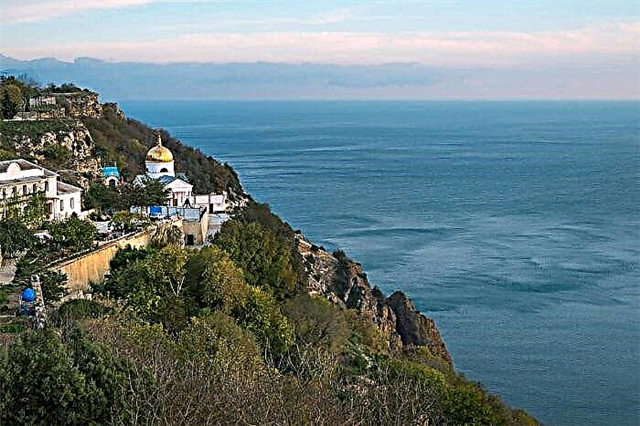
Cave monastery "Shuldan"
It is located near the village of Chernovka, 35 km from Sevastopol. According to a number of historians, it was founded by monks after fleeing from Byzantium in the 8th century. The monastery consists of two temples in caves and two tiers of outbuildings. In the artificially created caves, frescoes of the XII-XIII centuries have been preserved. From the plateau where the chapel tower was erected, a beautiful view of the Shul valley opens up. The current monastery is a historical reserve.

The best beaches of Sevastopol
The city has good beaches where you can sunbathe. Jasper beach is often called the most beautiful beach in Crimea by tour reviewers. Popular beaches in the North side of Sevastopol, on Uchkuevka and Lyubimovka.
Jasper beach
Beach with good infrastructure in the Balaklava region near Cape Fiolent with a length of 450 meters. Interesting natural landscape - steep banks, clear water, rare plants grow on the rocks, pebbles have a color from red to green, there are pieces of real jasper.In 150 meters from the beach there is a volcanic surface of the Georgievskaya rock. It rises 50 meters above the water.

Crystal beach
It is located in the center of the city near the Sevastopol Bay. This unusual beach has no sand or pebbles - only a concrete base from which stairs and steps lead into the water. The depth of 2-2.5 meters starts right off the coast. One of the favorite pastimes of vacationers who know how to swim well is running diving. An excellent view of the bay and the Sunken Ships Monument opens from the coastal zone.

Uchkuevka beach
It is considered the best beach in Sevastopol due to its excellent infrastructure, a spacious sandy beach 1.5 km long and a lot of entertainment. The beach has a stationary sun canopy for all comers, sun loungers, changing cabins. In addition to the traditional resort entertainment - riding bananas and jet skis, there is an opportunity to paraglide or learn to dive, in the evening disco starts to work.

Beach "Lyubimovka"
Long beach 3 km long, 100 meters wide. It is located near the Uchkuevka beach in the north of the city. The coast is covered with small pebbles with sand and shell rock, there are also completely sandy areas. The depth begins at a distance of 3-4 meters from the coast. Near the beach there are many pensions and guest houses, souvenir shops, cafes and outlets with pies and corn. There is a sun lounger rental.

Monuments and memorials of Sevastopol
The most famous historical monuments and monuments of the city.
Memorial in honor of the heroes of the second defense of Sevastopol
Located on Nakhimov Square. It is a monumental wall with the image of a warrior, at whom the enemy's bayonets are directed. The names of the heroes of the USSR and the names of units of the Black Sea Fleet are engraved on the granite slabs. An anchor is installed on the left side of the memorial, symbolizing the inaccessibility of the sea fortress in 1941-1942. Since 1999, the Eternal Flame has been burning at the memorial, at which schoolchildren are guarding the honor.

See also: 30 most famous monuments of Sevastopol.
Monument "Sailor and Soldier"
The sculptural composition, located at Cape Khrustalny, is one of the most impressive monuments of Sevastopol. Its height is 40 meters. The decision to create the monument was made back in 1972, but work on its installation was completed only in 2007. The monument symbolizes the coordination of the actions of the fleet and infantry in the defense of the city during the Great Patriotic War. The monument is surrounded by a small square.

Obelisk to the Hero City of Sevastopol
Among the inhabitants of Sevastopol, the name "Bayonet and Sail" is widespread. One of the most recognizable symbols of the city opened in 1977. The stylized pieces and sail are made of reinforced concrete and faced with limestone tiles. As conceived by the architects, the monument at Cape Khrustalny symbolizes the unity of the sea and land forces during the war. The height of the obelisk is 60 meters. Obelisk has observation platforms.

Monument to A.I.Kazarsky
Installed on the Central City Hill in 1839. The monument to the hero of the Russian-Turkish war became the first monument of Sevastopol. Its height is 5 meters. The monument was designed by the architect Alexander Bryullov. It is an antique combat ship mounted on a pedestal. On the pedestal there are high reliefs depicting Kazarsky and the ancient gods - Neptune, Nika, Mercury.

Chersonesos bell
The Mist Bell has an interesting history. It was cast in Taganrog in 1778 from Turkish captured cannons. Sent to Sevastopol in 1803 by order of Emperor Alexander I for placement in the belfry of the Church of St. Nicholas. During the Crimean War, the bell was taken out as a trophy by the troops of England and France, in 1913 it was found hanging in the Notre-Dame Cathedral and returned back to Sevastopol.

Children's attractions of Sevastopol
In addition to military-historical sites, there are also quite children's tourist places in the city. This is a water park and a dolphinarium, a zoo. It will be interesting to come here with small children.
Aquapark "Zurbagan"
A large open-air complex in the city center with a lot of water activities. The rides are divided into several zones - family, extreme, children. There are 8 slides for adults - Black Hole, Kamikaze, Freefall. There is a wave pool and a pool with a geyser, the water jets of which reach 30 meters. There is a cafe. In the evening, discos begin to work on two dance floors.

Sevastopol Zoo
Located in the Nakhimovsky district. This is a private zoo, which is located on the territory of an ordinary garden plot. The zoo in Sevastopol was opened not so long ago - in 2012, but it is actively replenishing the collection of animals. Already, you can see puma, leopards, meerkats, porcupines, monkeys, ostriches, peacocks in it. Many animals can be fed. And you can ride a high horse of the Shire breed.

Dolphinarium "Country Dolphinia"
Opened on the Kornilov embankment in 1997. They give performances every day. The show programs involve marine animals - seals, dolphins, beluga whales. Professional trainers work with animals, who teach their wards unusual tricks - dancing in the water, acrobatic sketches, reading and drawing. After the show, viewers can take photos with the maritime artists.

Eco-park "Lukomorye"
An amusement park, covering an area of 2 hectares, where about 40 species of trees grow. You can come here for the whole day with the whole family. The park is decorated with sculptures of cartoon characters. There are playgrounds with attractions, a mini-zoo, cafes and several museums - marmalade, Indian, Soviet childhood, history of ice cream. They hold culinary master classes, there is an exhibition of dinosaurs and an exposition of space.

Natural attractions of Sevastopol
One of the most beautiful places in Crimea is Cape Fiolent. It is a must-see here. Also in the vicinity of the city there are beautiful quarries and the Baidarsky nature reserve with a picturesque gorge and reservoir.
Cape Fiolent
A place that amazes with the beauty of natural landscapes - the sea surrounded by coniferous forests. The picturesque cape was captured in his painting by the marine painter Aivazovsky. At the foot of the steep cliffs there is Jasper Beach, from which a staircase leads to the ancient St. George Monastery. The rocks of Georgievskaya, Pilad and Orest stand out in the waters of the sea. It is not difficult to get to the cape - a trip by car from Sevastopol will take about 30 minutes.
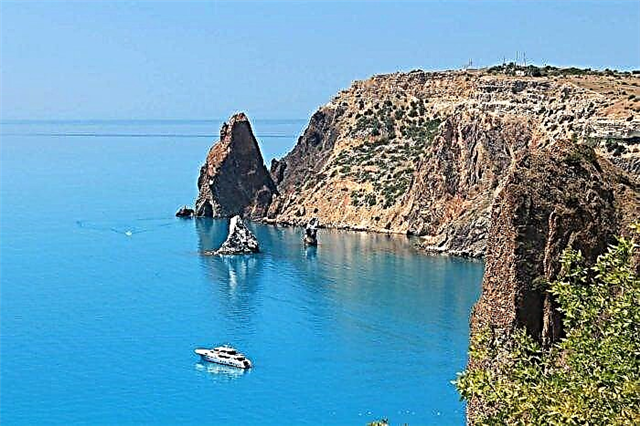
Cape Aya
Landscape reserve, which protrudes into the sea for 18 km. Located in the Balaklava region. Unique plant species grow here, more than 20 of which are included in the Red Book. On the cape, it is worth exploring the tracts, the Laspi and Batiliman bays, the wild beaches of Fig and the Lost World, the ruins of the monastery of St. Ilya. Dolphins live in the water area. There is a tent camp on the seashore where you can stay overnight.

Kadykovsky quarry
An industrial site that has become a popular tourist attraction after successful photos of it were posted on social media. They successfully capture a heart-shaped quarry lake surrounded by sandy shores. After the quarry was mined in the 2000s, its funnel gradually began to fill with fresh water. Swimming in the quarry is prohibited, as is the descent to it. The most interesting views are from above.

Diana's grotto
Located in one of the spurs of Cape Fiolent. You can get to the arched hole in the rock only by water, by boat from the western side of the cape. The length of the picturesque grotto is 15 meters. Only experienced divers risk swimming along the grotto - the bottom there is uneven, and the depth is large. On both sides of the cliff there are beaches, a visit to which can be combined with an inspection of the grotto.

Inkerman quarry
Freshwater reservoir in the suburbs of Sevastopol.The former quarry, where the famous Inkerman stone was previously mined, is located next to the St. Clement Monastery. The Christians of Crimea have a belief that the career was filled thanks to the prayers of St. Clement in a dry year. The banks of the quarry are popular for picnics. The water in it is of a beautiful turquoise color, which looks differently black due to the great depth.

Baydarsky reserve
A charming natural corner where you can appreciate all the landscape diversity of the Crimean Peninsula - rivers, lakes, forests, canyons, mountains. Many people call the views of the Baydar Valley "Crimean Switzerland". Tourist routes along the Uzundzha and Chernorechensky canyons will not leave indifferent healers of natural scenic beauty. Hiking trails lead to the Kozyrek waterfall, Skelsky menhirs and Tavrsky boxes.





